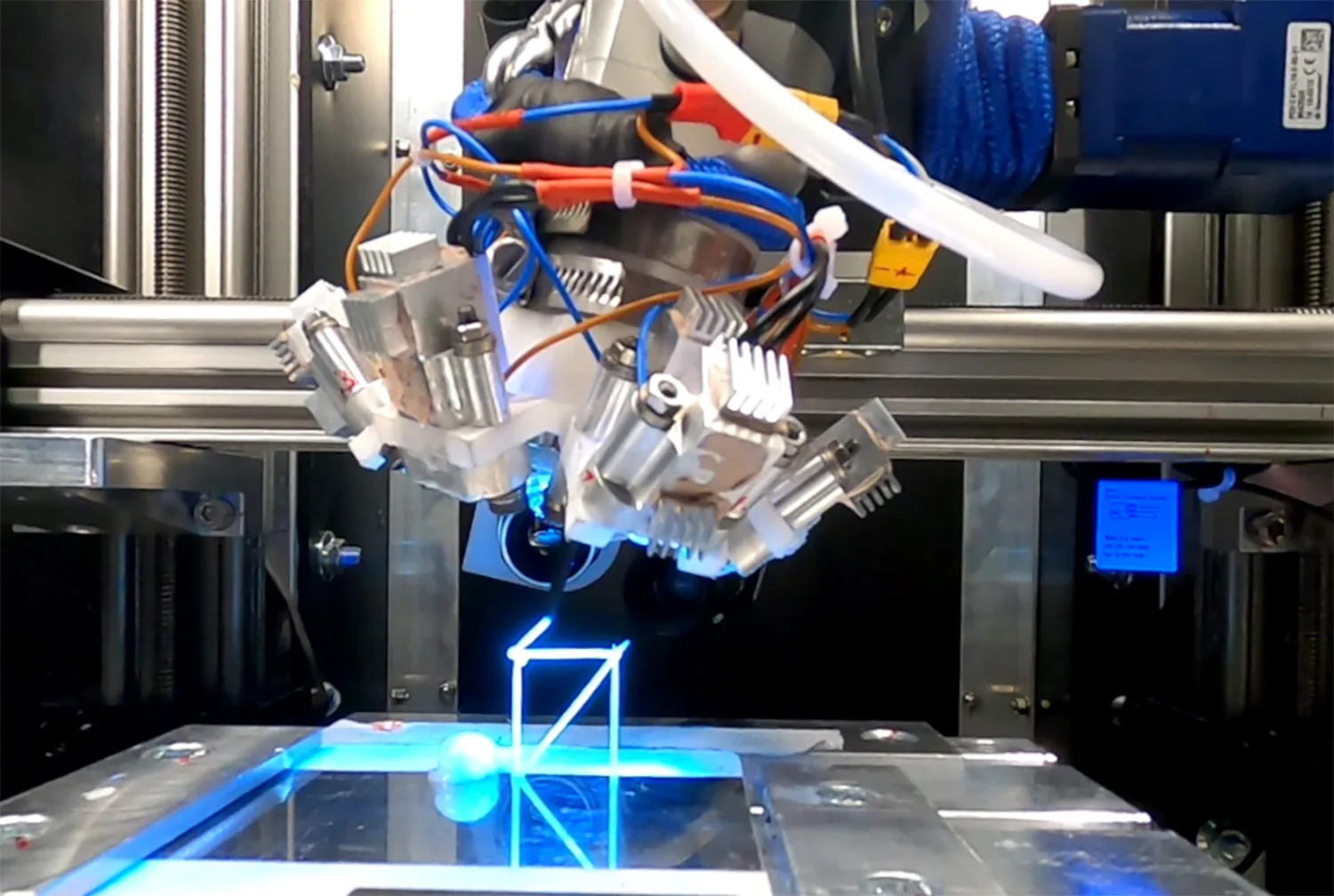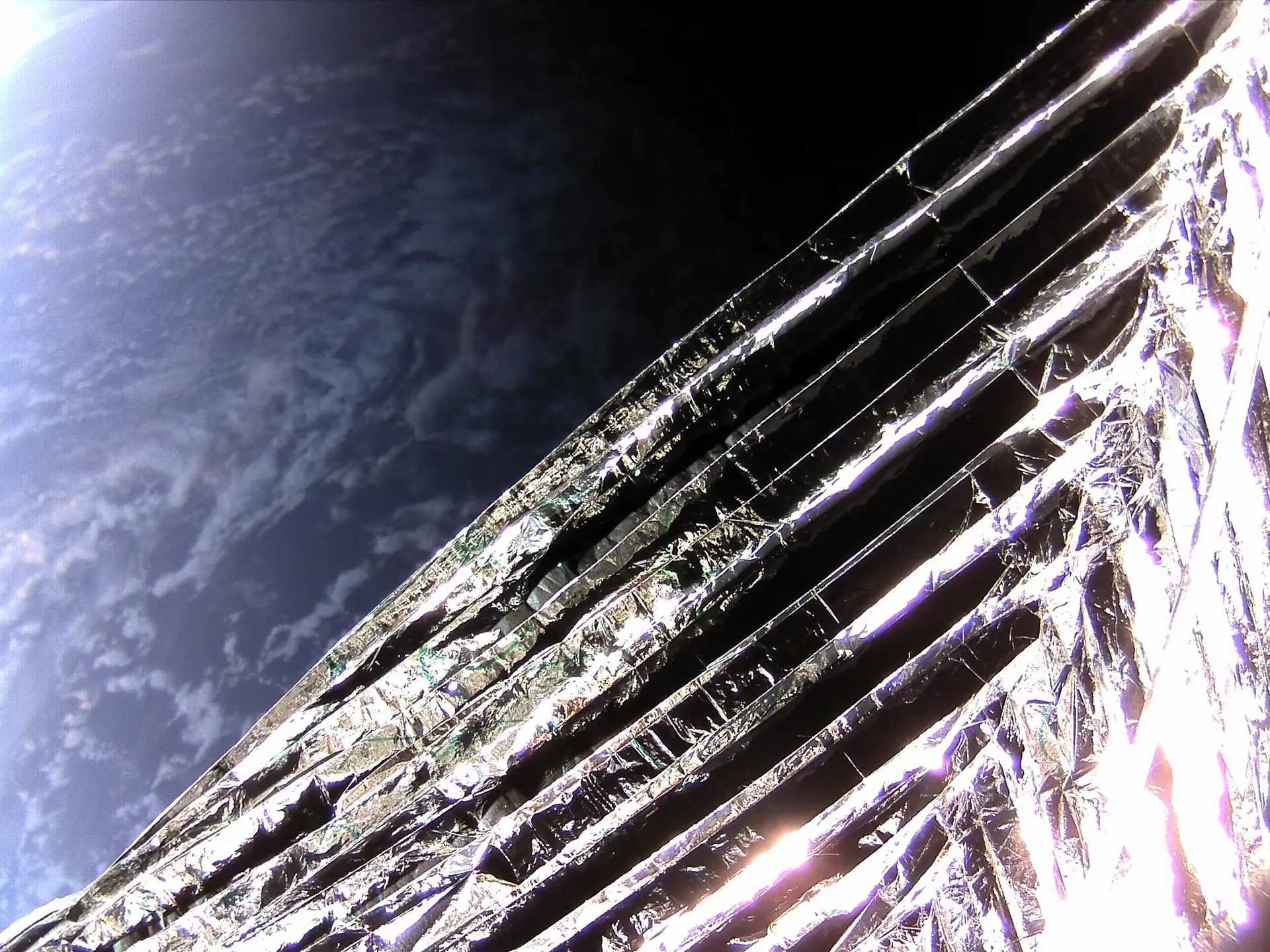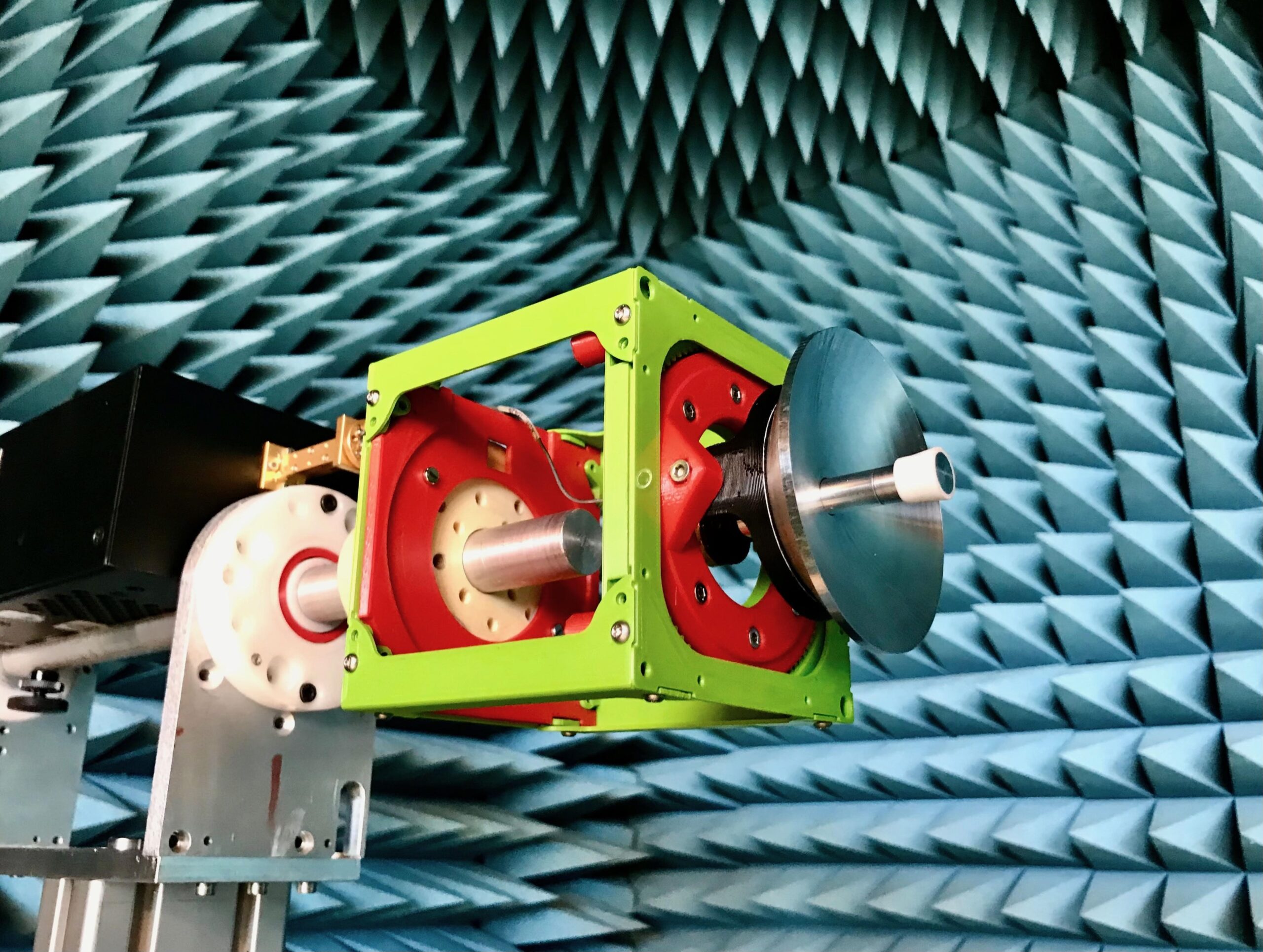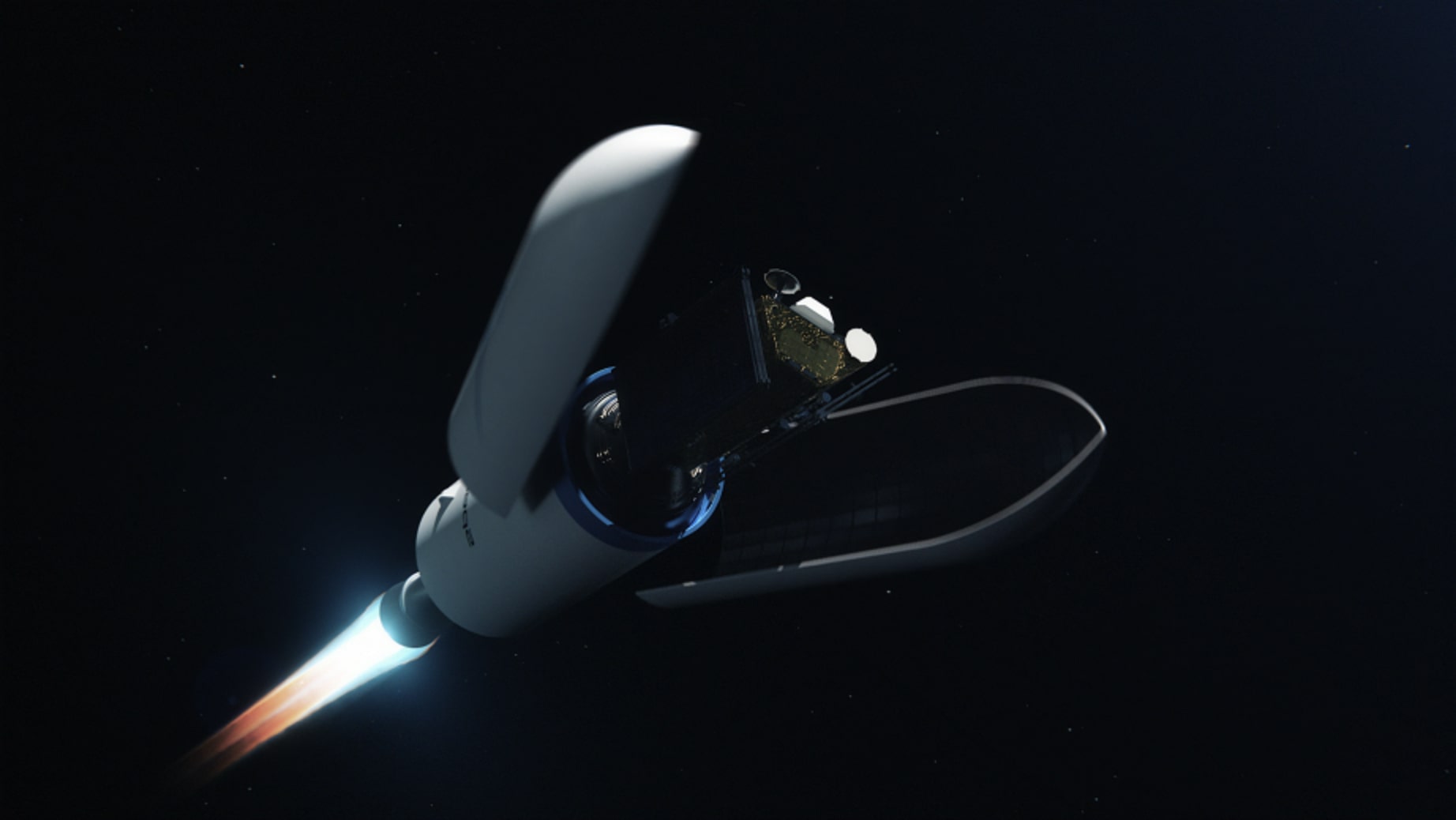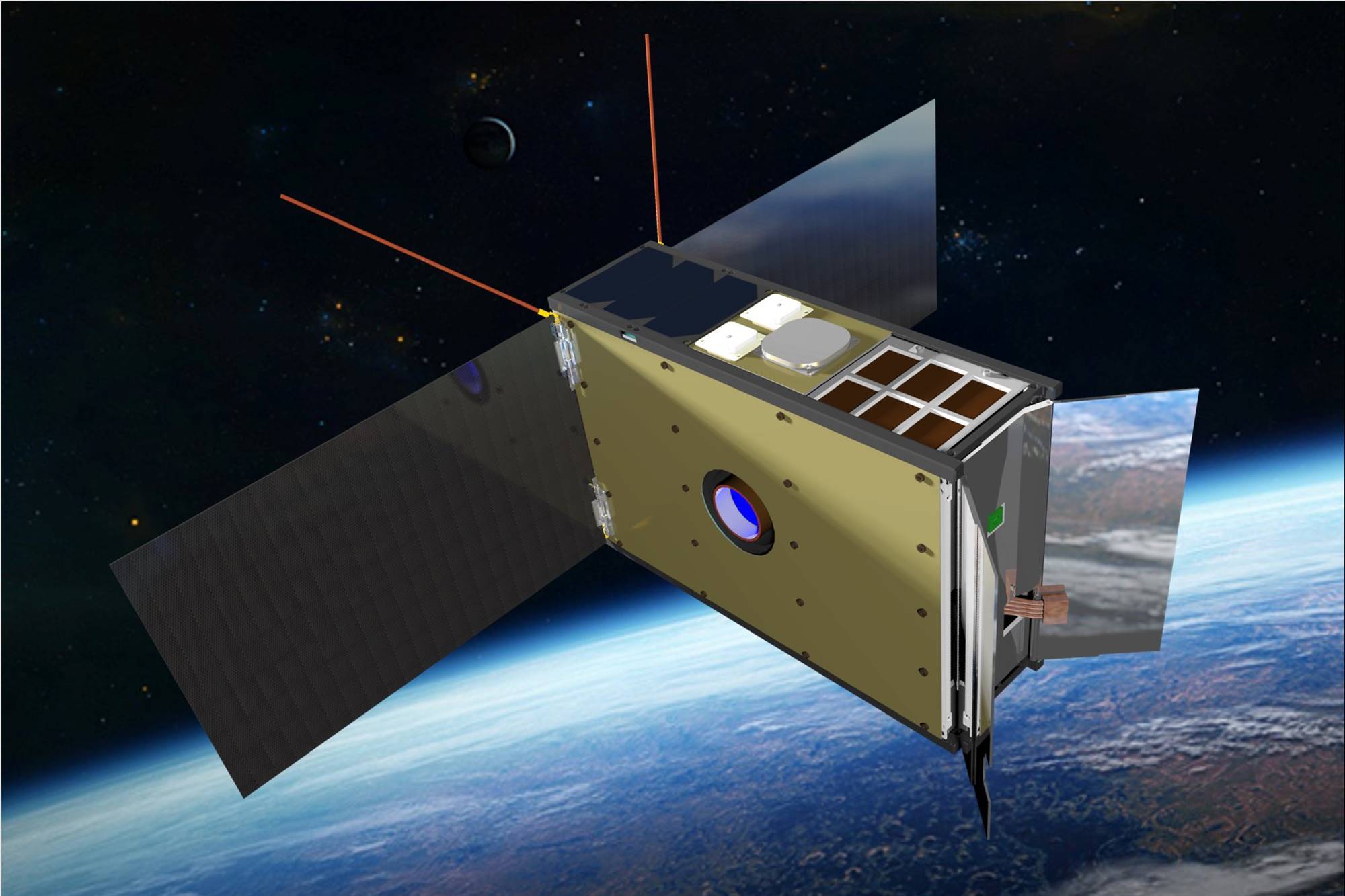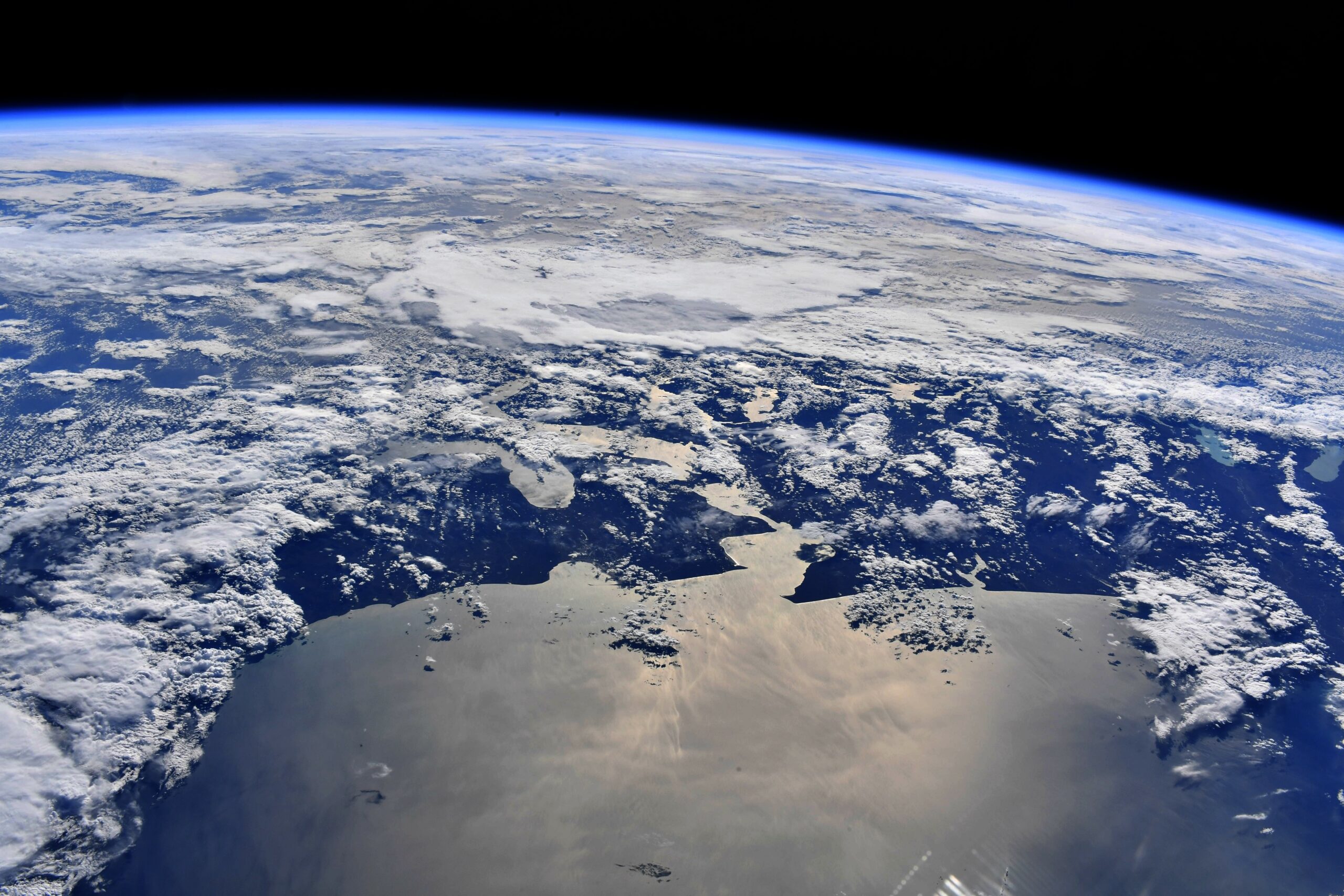
DcubeD launches actuators and space selfie stick with SpaceX
Published on Fri, 14.01.2022 – 16:14 CET in Missions, covering DCUBEDThe Transporter-3 mission from SpaceX was a very special highlight for DcubeD at the start of the year. The Germering-based company supplied the actuators used to release the satellites in orbit for the Spanish satellite manufacturer Fossa. And a selfie stick is also orbiting the Earth after the successful launch on Thursday.
At first glance, Germering seems quite inconspicuous. But the district town west of Munich can proudly claim to be represented in space. It owes this success to the NewSpace company DcubeD, which manufactures small trigger mechanisms, so-called actuators, for the space industry here. One of DcubeD's customers is Spanish satellite manufacturer Fossa Systems, whose satellites set off for orbit on the SpaceX Transporter-3 mission on Jan. 13, 2022. Astrodrom was invited to attend the specially organized launch viewing event at the Brauhaus Germering.
#MiaSanNewSpace
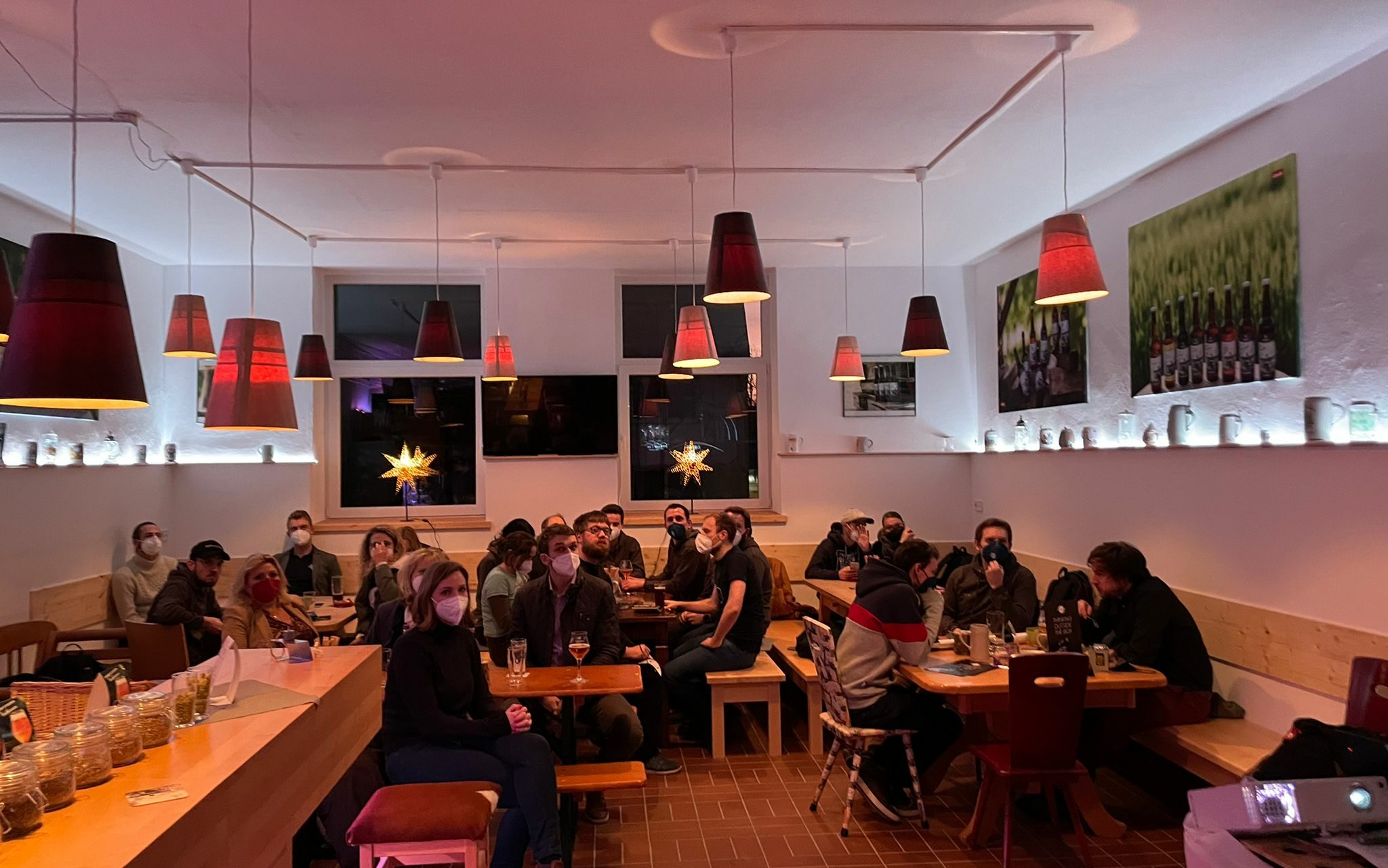
As soon as you enter the Brauhaus, you can see how much the team around Dr. Thomas Sinn, CEO and Founder of DcubeD, is looking forward to the launch of the Falcon 9. A large digital clock is clearly visible counting down, the screen, beamer and speakers are ready, and the team has made itself comfortable at the tables. Despite the FFP2 mask that has to be worn at all times, the atmosphere is good, the conversations are lively and the noise level is correspondingly high. Around 75 minutes before the scheduled launch in Cape Canaveral, Dr. Thomas Sinn takes the floor and opens the official part of the event.
Among the few guests allowed due to Corona regulations is Manuela Kreuzmair (CSU), the 2nd mayor of Germering. In her welcoming remarks, she mentions that the upcoming launch is the first rocket launch she has witnessed live. The fact that the occasion was the participation of a local company filled her with pride and was an enrichment for Germering.
Transition in the industry is the foundation for success
Dr. Thomas Sinn agrees, but above all emphasizes the performance of the entire team. Everyone had made their contribution to making this day a special one for the company. The prerequisite for being able to participate in space missions, however, is transition in the industry. The majority of satellites launched into space today are industrially standardized and have significantly smaller dimensions compared to earlier times.
Cubesats, which have an edge length of 10 x 10 x 10 cm in their smallest unit (1U, 1 Unit), became established as the standard format. These cubes can be combined with each other to realize larger designs. Basically, miniaturization means less weight and, as a result, lower launch costs. In return, however, the technology installed in the satellites must also become smaller, but nevertheless function reliably. This is particularly the case with the products manufactured by DcubeD, which are mission-critical - in other words, they determine the success or failure of a mission.
"Door opener" for use in space

Put very simply, DcubeD develops and manufactures miniature switches. For the Transporter-3 mission, Fossa Systems relied on the nD3PP nano pin pullers, actuators specially developed for small satellites. With an edge length of 17 x 17 x 17 mm and a weight of just 25 g, they perform an important function in space. As Dr. Thomas Sinn explains, a metal pin holds a preloaded mechanism in place until the pin is retracted. You can think of it somewhat like the latch on a door. While on Earth the latch is pulled out of the strike plate by pressing the door handle and the door can be opened, the pin in space reacts to an electrical signal.
The decisive factor here is the reliability with which this pin is retracted. To ensure operational reliability, DcubeD tests each individual actuator in a specially developed device. In the process, the nano pin pullers are triggered and reset several hundred times. However, the DcubeD team still had to exercise patience before proving that this principle also works under the influence of microgravity in orbit.
One SpaceX Transporter Mission, Two DcubeD Missions
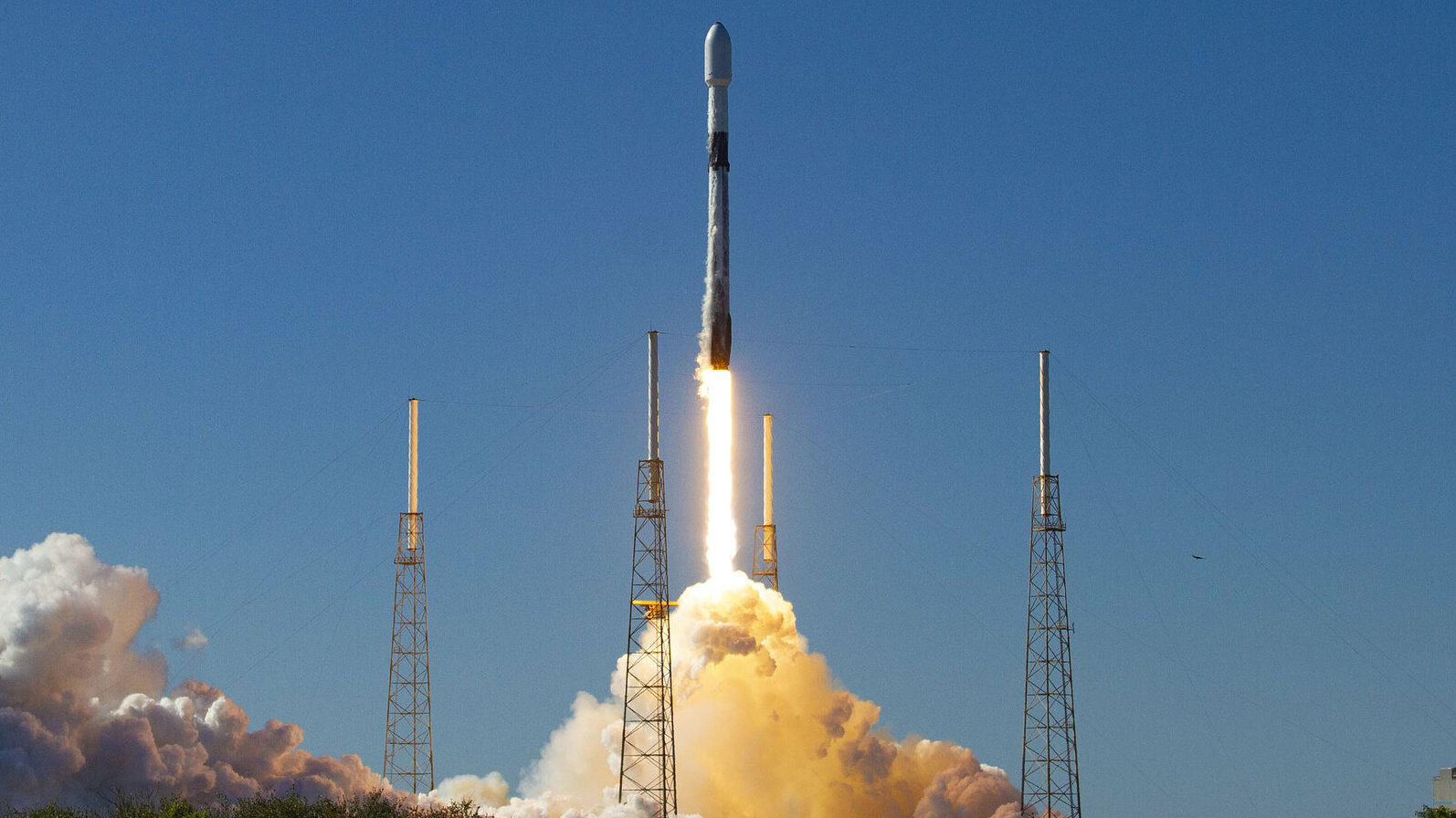
Less than an hour before the launch, the team takes another look at the upcoming mission. The focus is also on the booster used by SpaceX, which is already launching into space for the tenth time. Among others, it brought the two American astronauts Behnken and Hurley to the International Space Station ISS as part of the Crew 2 demo mission. Due to the intended orbit, the booster is scheduled to land in Landing Zone-1.
However, the payloads that SpaceX is putting into space on the Smallsat Rideshare mission are crucial. There are to be a total of 105 satellites, including FOREST-1 from the Munich-based company OroraTech. The release of the satellites into space is planned down to the second. As can be seen from the overview shown by Dr. Thomas Sinn, the so-called deployment of the FOSSASATs begins 1:05:48 after launch. The last release of ION SCV-004, which is relevant from the point of view of DcubeD, even takes place after one hour, 24 minutes and 30 seconds.
DcubeD In-Orbit Demonstration Mission
What this mission is all about is explained by Joram Gruber, Head of Design & Co-Founder of DcubeD. As he puts it, there's also a chicken-and-egg problem in spaceflight: "In order for space products to be sold to customers, they have to have proven that they work in space." One way to break this cycle was to use the vacant slot in a 3U nanosatellite made by Polish manufacturer SatRevolution. The Germering-based NewSpace company struck, securing half of a standard unit at 0.5U. Space enough to launch the Space Selfie Stick D3S3 into space. Based on the premise that a picture is worth a thousand words, a camera mounted on the selfie stick is supposed to take a picture of the satellite. At best, with the Earth in the background, as Dr. Thomas Sinn adds. Although it sounds like it, the main task is not to take a picture, but to demonstrate the release mechanism developed by DcubeD.
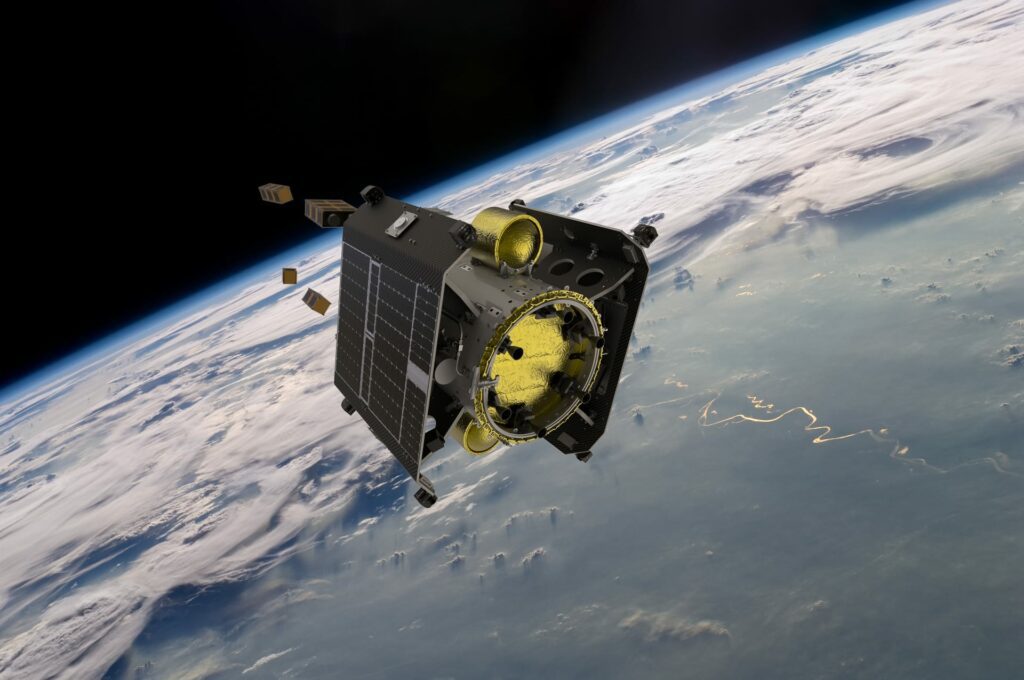
After realization in a record time with patience to the launch
However, the team only had a total of four months for the development. In just 16 weeks, both the boom (i.e., the stick) and the necessary mechanism had to be developed, the electronics integrated, and the necessary interfaces defined and adapted. The work began in December 2020 and was completed in March 2021. Originally, the launch was scheduled for June 2021, but it was postponed several times. As Joram Gruber reports, the satellite was not approved as a payload for the planned launch for political reasons, among others. In addition, the satellite was modified in the meantime, which led to further delays.
In general, this mission demands a lot of patience from those involved, because before the selfie stick can unfold, the satellite must first begin its work. The first images are therefore not expected until between 15 and 30 days after launch. That, Gruber says, would be "the cherry on top." First and foremost, however, the aim is to prove that the release mechanisms work.
International cooperation within the scope of the FOSSA PocketPOD mission
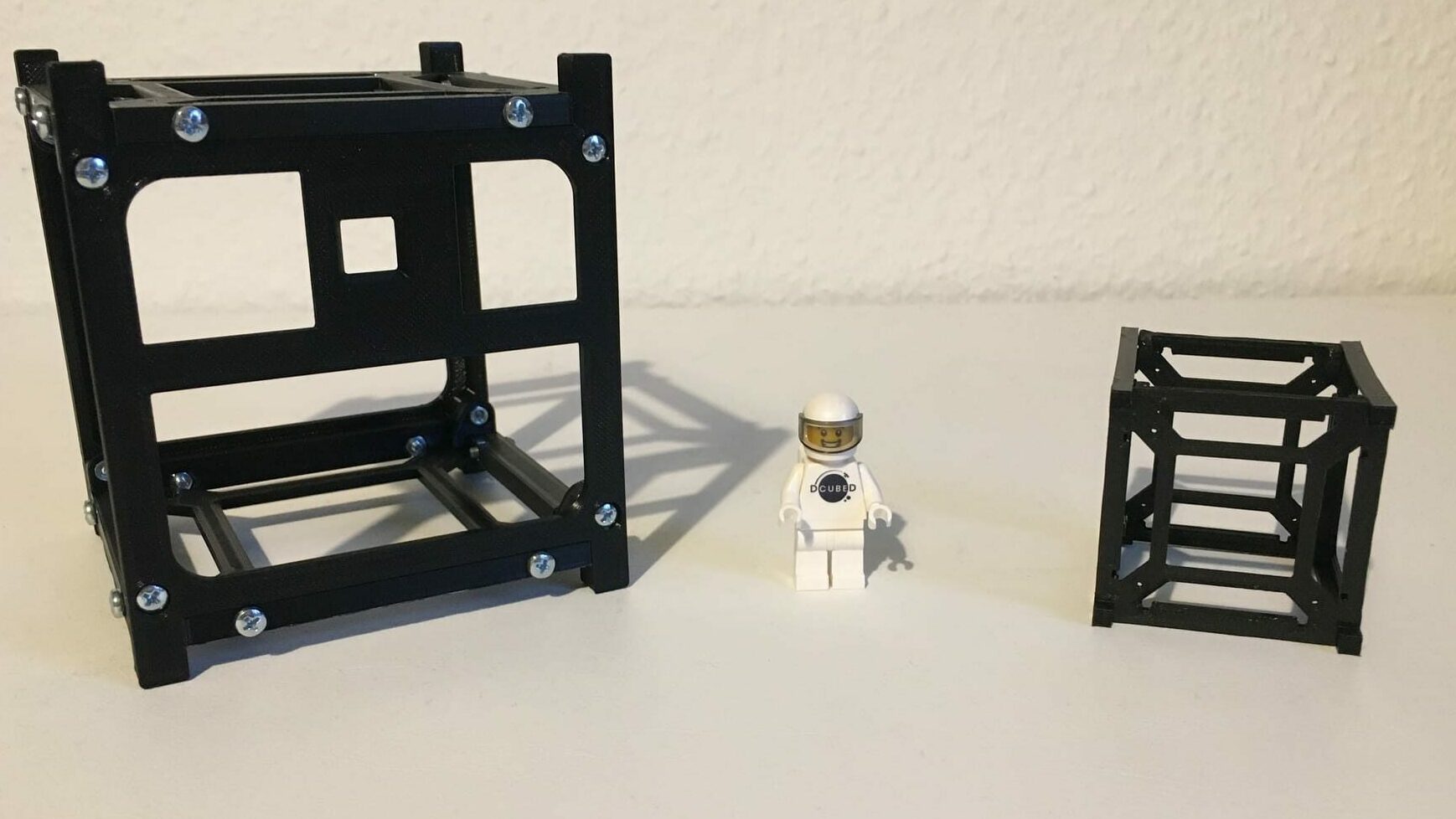
An overview of the FOSSA PocketPOD mission was provided by Thomas Lund, Head of Analytics and Co-Founder at DcubeD. As he pointed out, the Germering-based company has already been working with the Spanish company since 2019. Here, too, there were always last-minute changes in the requirements for the satellite, which is once again smaller with an edge length of just 5 x 5 x 5 cm. The manufacturer did not receive the final "go for launch" until the morning of the launch day. The mission's two PocketPODs contain a total of eight picosatellites, which require flaps to be opened for their release in orbit. DcubeD supplied a total of four nD3PP actuators for this purpose.
„We started late, but we finished early.“
After the short briefing about this mission, there are still around 30 minutes left on the countdown clock at this time. The mood becomes increasingly tense, although everyone present tries to remain as calm as possible. With the start of the SpaceX live stream, silence returns to the Brauhaus Germering. The obligatory description of the mission and numerous details from SpaceX follow, while the countdown counts down continuously.
At 4:25 p.m., the Falcon 9 lifts off from Space Launch Complex 40 in Florida. The launch goes off without a hitch, and the telemetry data transmitted are nominal. Meanwhile, silence reigns in the brewery, interrupted only by compressors starting up again and again for short periods. But the team does not cheer, applaud or fall euphorically into each other's arms. Instead, they all follow the transmitted images. When the altitude of the rocket is given as 200 km, a "We are in Space!" resounds through the room. A first, quiet applause can be heard.
“Separation confirmed”
But this calm is not due to the disinterest of those present, but to their tension. Whether the mission is successful will only become clear in about an hour. In the meantime, the best Bavarian craft beer and Leberkäse are served. The lively conversations, however, abruptly become quiet again. In the livestream, images from the orbit can be seen again and again, and there is also acoustic confirmation via released satellites. The second stage of the Falcon 9 is just at an altitude of 537 km above India, when "FOSSASAT 2 separation confirmed" can be heard over the loudspeakers.
The DcubeD team seems to be holding its breath, quietly counting the satellites still to be released. Then at T + 01:06:38, the redeeming message: "FOSSASAT 3 separation confirmed". Now there is no holding back, cheers break out and people clap their hands. The work of the last weeks and months has paid off, the actuators of DcubeD are "space proofed". The upper stage is meanwhile over Greenland, when also the release of the satellite ION SCV-004 is confirmed.
Mission successful: DcubeD reaches TRL 9

With the successful FOSSASAT mission, DcubeD's Nano Pin Pullers have achieved Technology Readiness Level 9 (TRL). According to NASA, this level is awarded as soon as a technology is "flight-proven" in a successful mission. Whether everything will also go according to plan on the second mission will not be known until February 2022. However, the chances are good and DcubeD can point to a success rate of 100% as of now. The start of a new year could hardly be better. Let's hope that the wish of taking your own photo from space will come true - at best with the Earth in the background.

